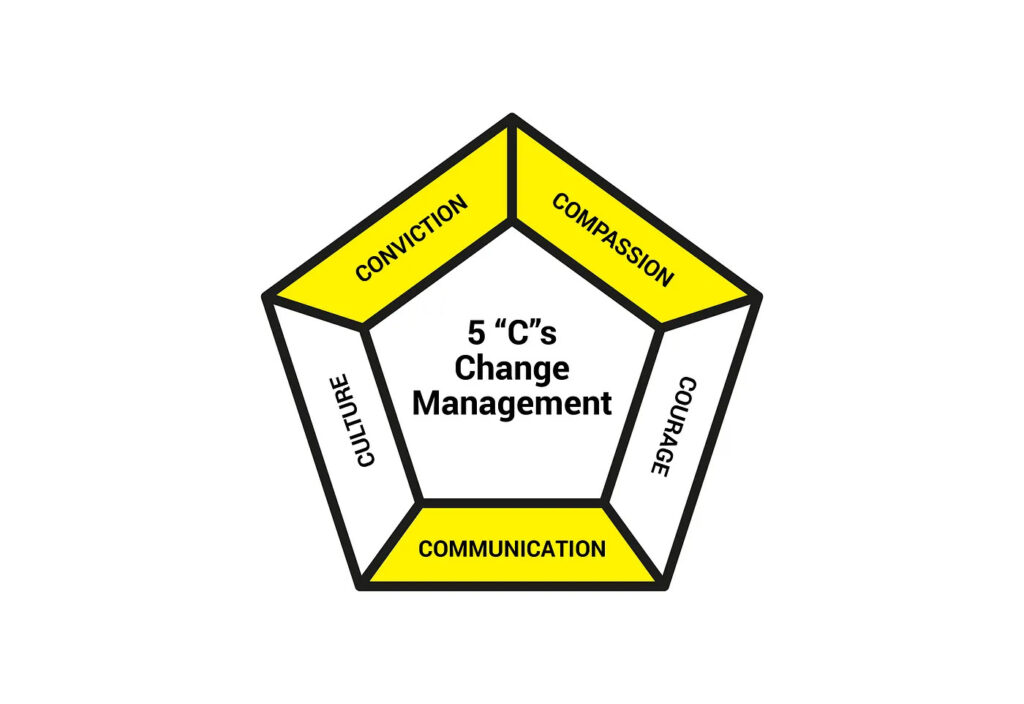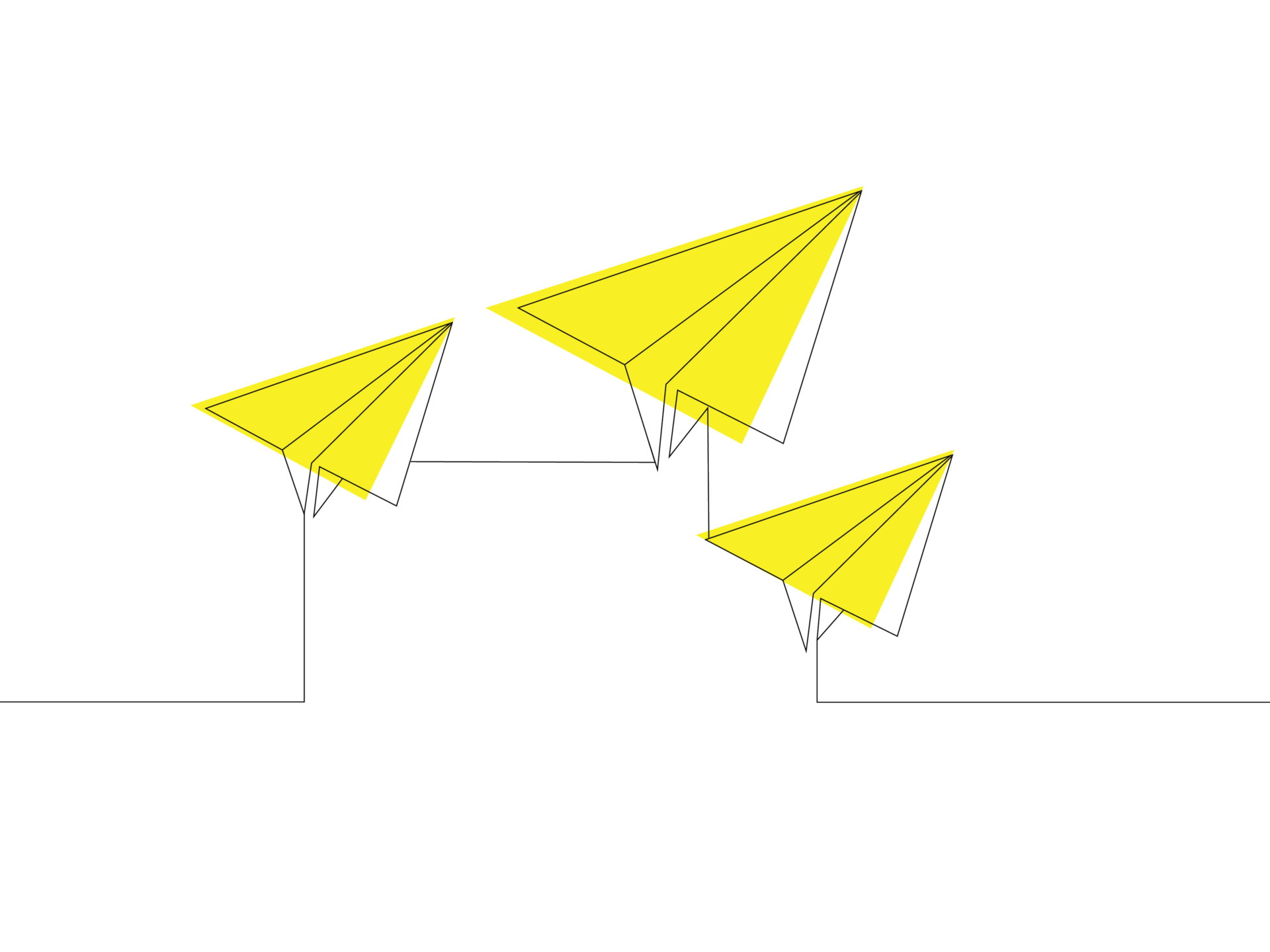How leaders of today can leverage design for successful change management.
Change is a fundamental aspect of the human experience, yet each change is a unique journey. In today’s fast-paced business world, traditional change management often relies on standardized tools and templates, primarily aiming to drive people to adopt change rather than adapt, which should be at the core of any transformation.
However, in my experience working with management consultancies and clients, I consistently encounter requests for deliverables in the form of best practices or guidelines to navigate the change management process. Hidden within these playbooks and standardized assessments lies an assumption that change follows a linear and systematic path. It presupposes that even in the face of a complex equation, one can simply follow a set order of operations and arrive at the correct answer.
But here’s the issue: these “guidelines” often miss the mark. Change is not just about adopting new tools or modernizing processes. Treating it as a linear process often disconnects individuals from the real essence of change.
Change management focus needs to shift from organizational goals to individual desires, fostering collaborative and effective change.
Understanding the key factors for successful change
Before embarking on the transformation journey, it is crucial to grasp the fundamental factors that underlie successful change. These factors, often referred to as the 5 “C”s — Culture, Communication, Courage, Conviction, and Compassion, serve as the foundation of effective change management.

The 5 pillars of change management. Source HBR — Everything starts with trust
- Culture: Culture sets the tone for how change is embraced within an organization, shaping its very identity.
- Communication: Effective communication ensures that every individual is aligned on the path of change, fostering a collective sense of purpose.
- Courage: Courage serves as the guiding light for bold exploration, propelling individuals and teams into uncharted territories of transformation.
- Conviction: Conviction represents an unwavering belief in the significance of change, providing the determination needed to overcome obstacles.
- Compassion: Compassion weaves empathy into the fabric of the change process, nurturing understanding and forging bonds amid the tumult of transformation.
Some might wonder, ‘Isn’t this just about setting the vision and direction? What about the most crucial part — implementation?’ This is where most change management initiatives falter. Here, we present some design hacks that offer an alternative path to achieving a significant impact.
How can leaders harness design for change?
In the realm of change management, design plays a pivotal role, serving as the guiding force that helps organizations navigate the intricacies of transformation. Let’s explore various ways in which design can serve as the catalyst for diagnosing and seamlessly implementing change, all while keeping the 5 “C” in mind:
- Culture — Immersive Cultural Experiences: Fostering change culture involves creating immersive experiences that allow new values to be deeply infused into employees. These experiences can take various forms, including interactive workshops, cultural immersion programs, or team-building activities. The primary goal is to immerse employees in the organization’s core values, instilling them through firsthand experiences. This approach goes beyond superficial decor; it cultivates a shared understanding and commitment to these values, forming the bedrock of the organization’s culture.
- Communication — Messaging Design: Leverage user journey mapping methods to identify the right topics and communication channels to drive employee engagement. After gaining insights into employees’ wants and concerns, organizational change leaders can design tailored messages in visually appealing and coherent formats, such as posters, short-form videos, and interactive FAQs, aligning with employees’ content consumption behavior. This approach ensures that change management communications are not only engaging but also closely tailored to employees’ needs and preferences, ultimately enhancing the success and impact rate of the communication efforts.
- Courage — Innovation by Design: Innovation programs driven by design not only encourage but also reward employees for contributing innovative ideas that advance change management. These initiatives foster cross-functional collaboration in brainstorming and ideation sessions, guided by design principles. Facilitators actively support teams in generating innovative solutions and approaches. Through this design-driven approach, employees are empowered with the courage to take ownership of and drive change in their distinct and creative ways.
- Conviction — Designing for transparency: Conviction is forged through purposeful design. It involves strategically crafting transparent communication channels and platforms and constructing an environment characterized by openness and honesty. This facilitates employees’ clear understanding of the change process, its objectives, and the collective benefits it brings. Visual progress trackers, real-time updates, and accessible feedback mechanisms all play crucial roles. Such design-driven transparency not only demystifies the change process but also empowers individuals to recognize their roles in the larger narrative. It instills a profound sense of ownership and trust, as employees witness the organization’s unwavering dedication to their growth and the greater good. In this environment, belief in the change transcends mandate; it becomes a shared conviction, propelling all toward a common transformative goal.
- Compassion — Empathetic Design: In the context of change management, compassion focuses on establishing support networks and channels to help employees effectively navigate transitions. This involves creating spaces, whether physical or digital, where employees can seek guidance, share their concerns, and receive empathetic support. These support systems go beyond traditional approaches, aiming to create a compassionate ecosystem that ensures employees have the resources and understanding needed to navigate change successfully. It’s about fostering a sense of community and providing the support necessary for individuals during transformational periods.
Leadership in an era of constant change needs to focus on people, and design is able to help leaders achieve the intended outcomes of change management.
As we navigate the ever-evolving landscape of business and transformation, it’s imperative that we recognize the transformative power of design. It’s about fundamentally reshaping the DNA of change management. The 5 “C”s — Culture, Communication, Courage, Conviction, and Compassion — are the cornerstones upon which successful change is built. They are the human elements that breathe life into cold, rigid frameworks.
Yet, if C-suites continue to view design as an afterthought, they risk becoming the very entities they seek to change — stagnant, unyielding, and disconnected from the heartbeat of innovation. In this rapidly shifting world, those who fail to embrace design as a strategic ally in change management may soon find themselves on the receiving end of change, rather than the architects of it. But it’s not just the C-suites that should heed this call to action. Designers, too, must expand their horizons. Beyond the realms of product or service design lies a vast canvas where they can influence not only what we use but how we adapt, evolve, and thrive in the face of change.
Before signing off, let us remember that the future belongs to those who dare to reimagine it, those who harness the power of design to transform not just businesses but the very essence of change itself. It is a future where innovation knows no limits, where unwavering conviction intertwines with profound compassion, and where courage paves the way for a world that embraces change as a constant, beautiful metamorphosis. The question is, will you choose to be a spectator, or will you become the driving force of change?
